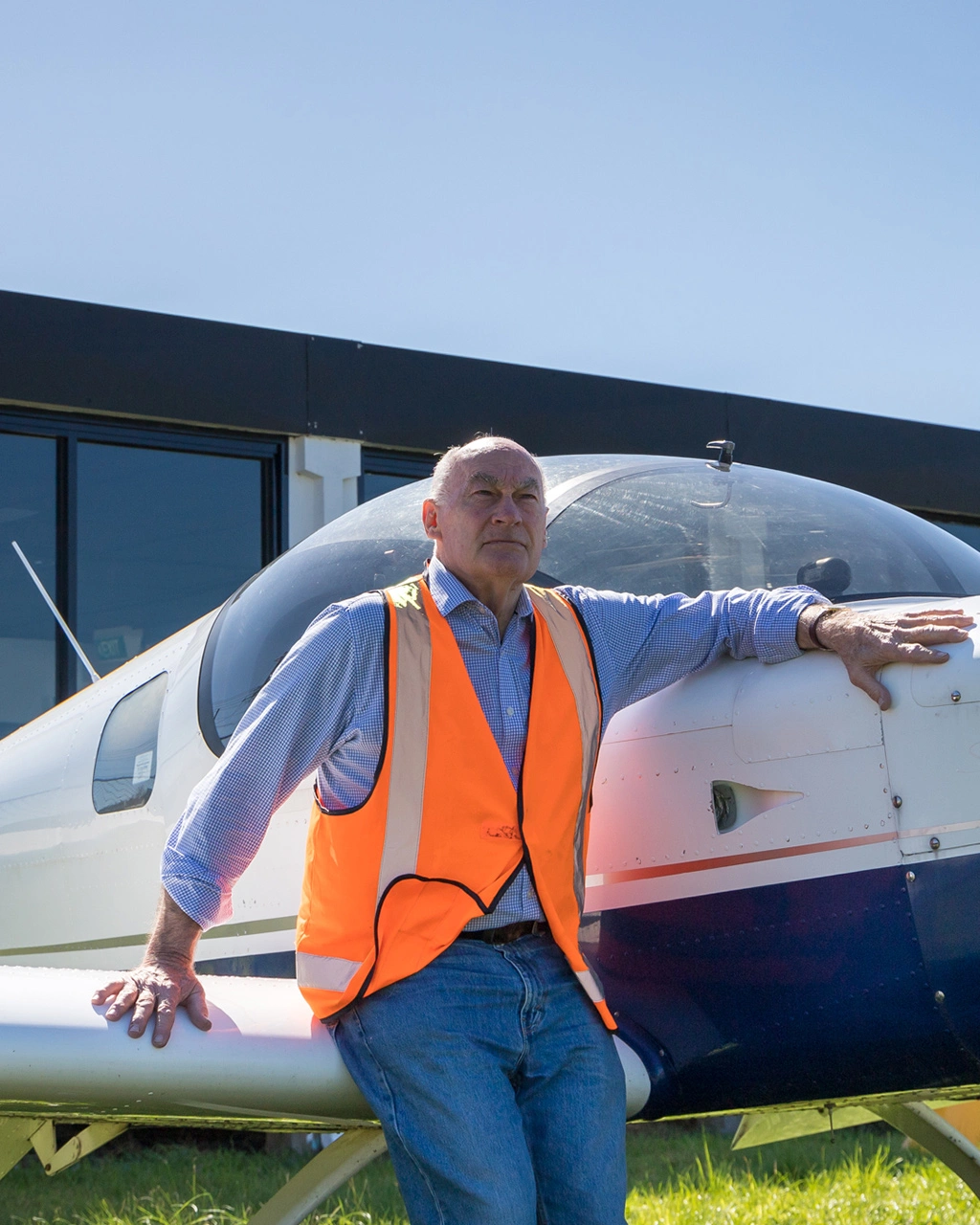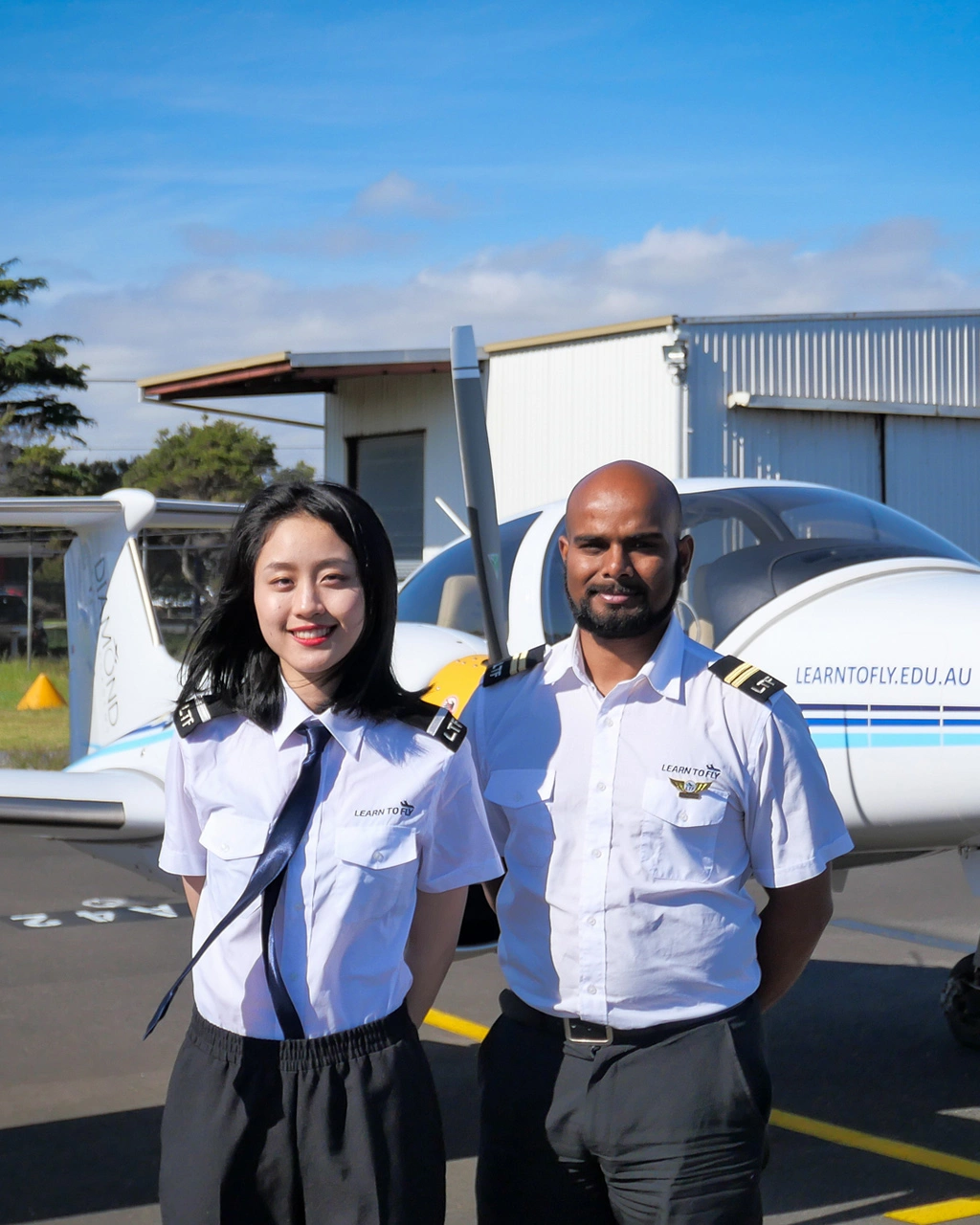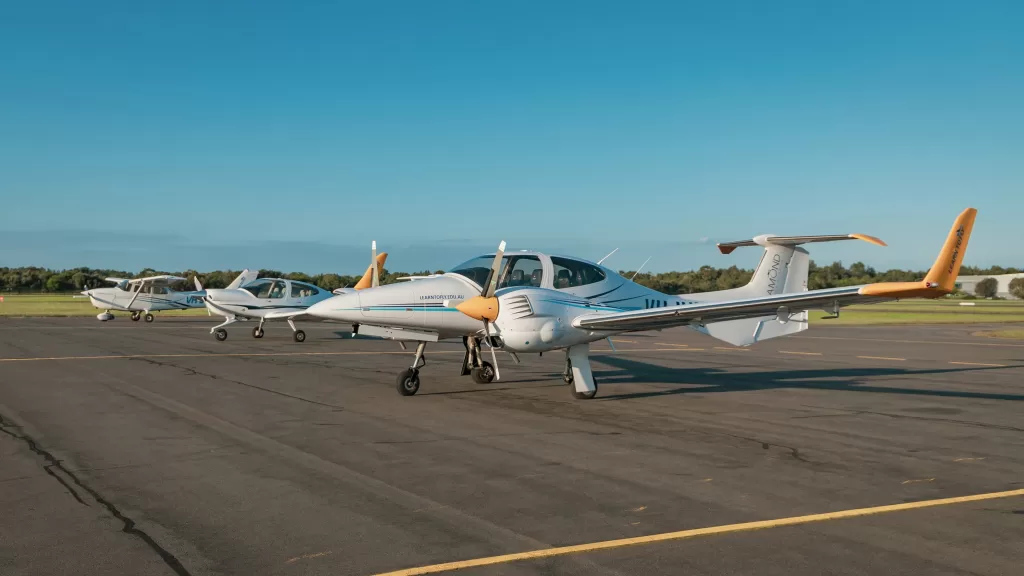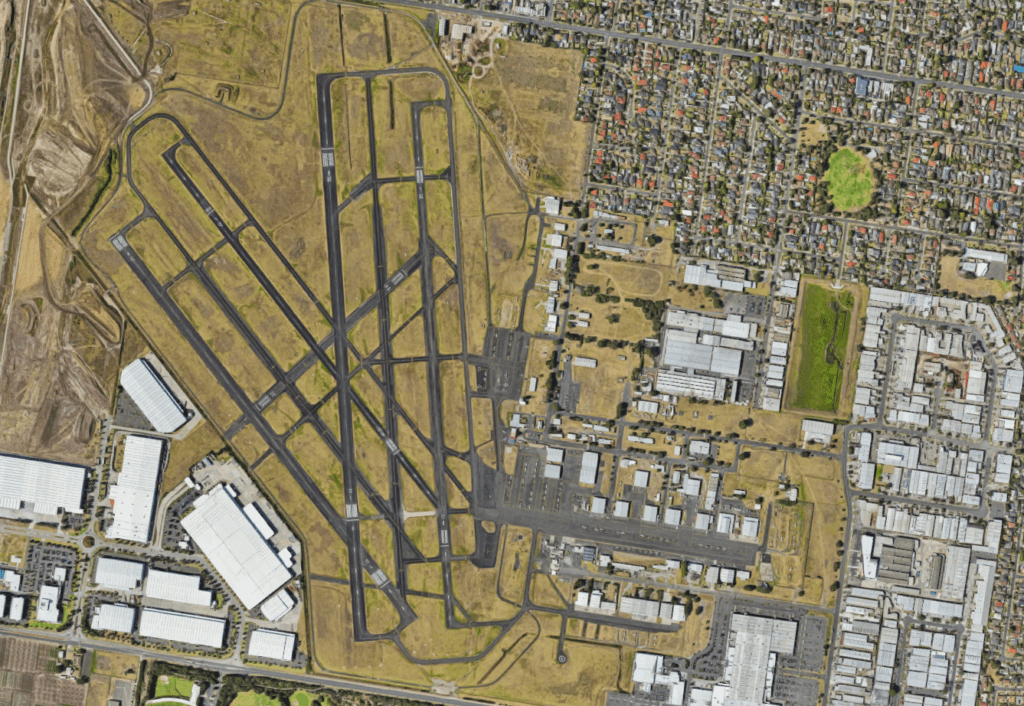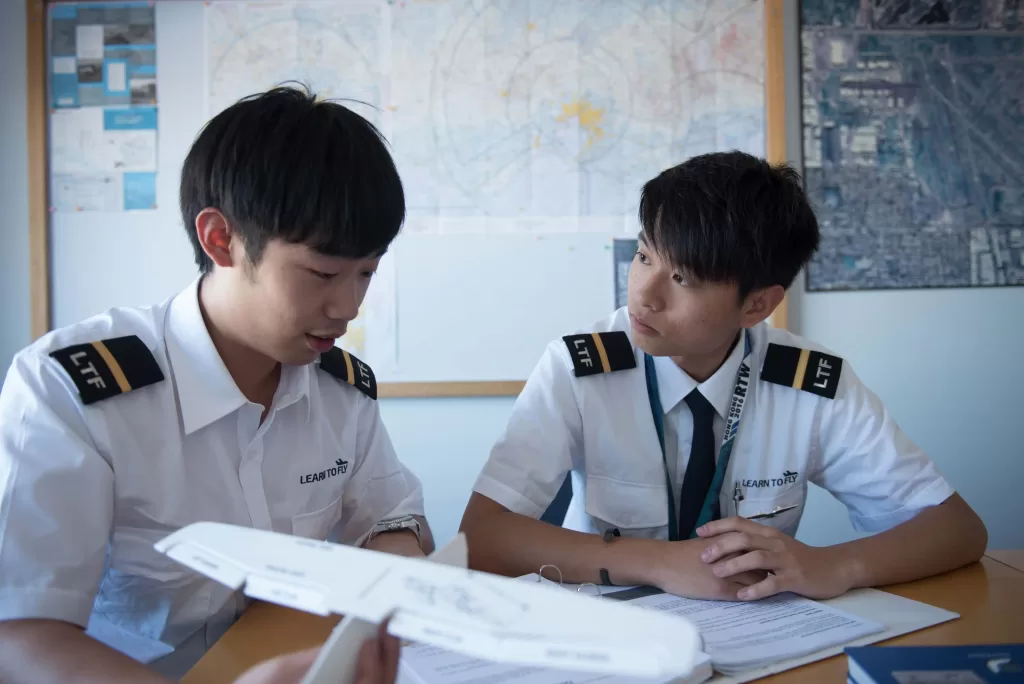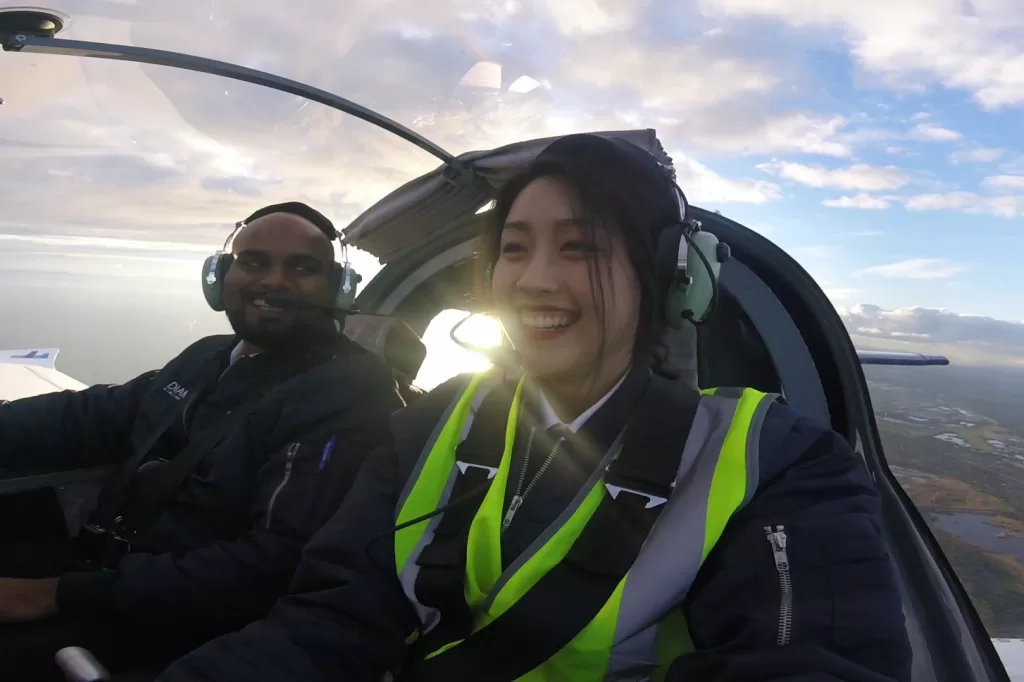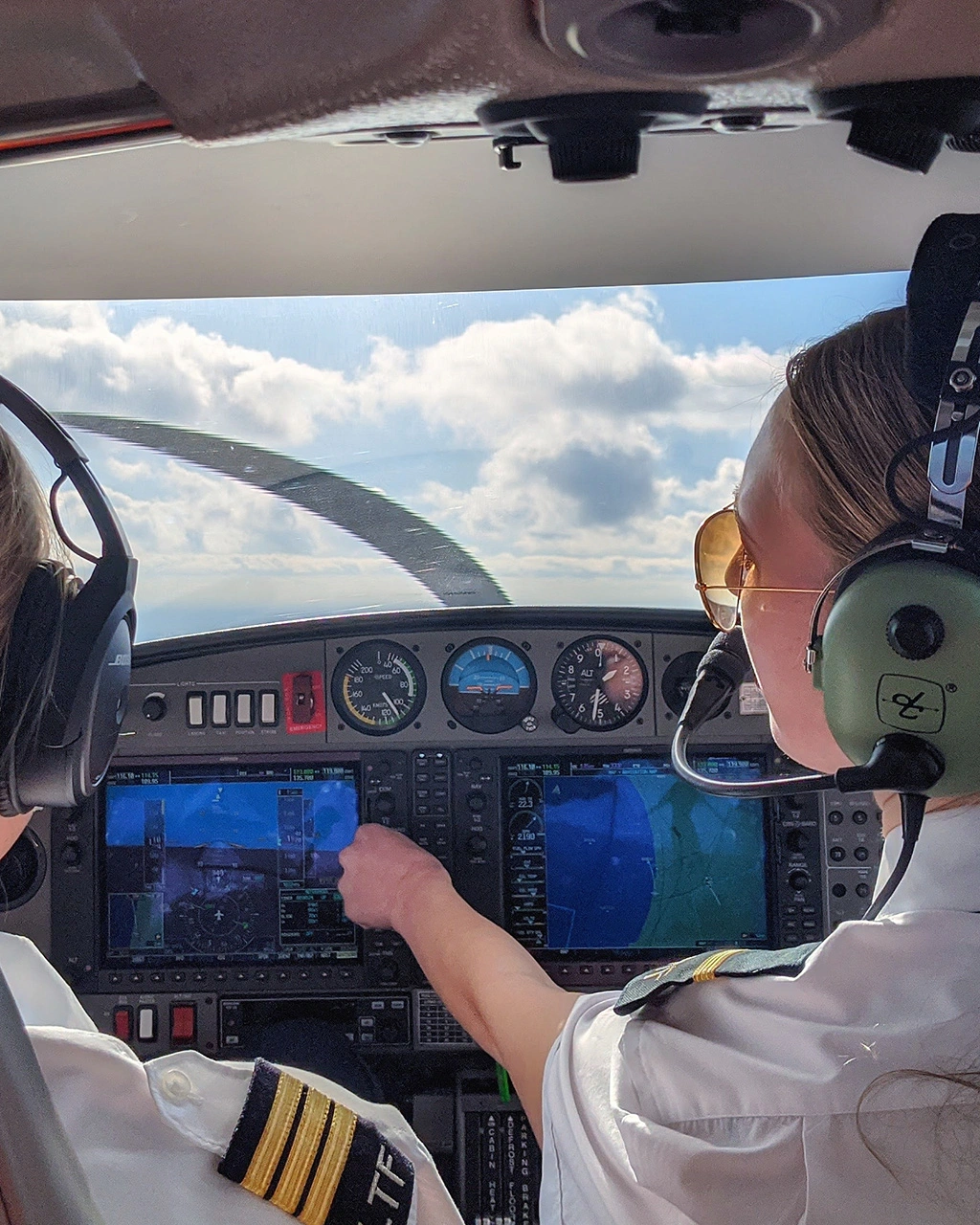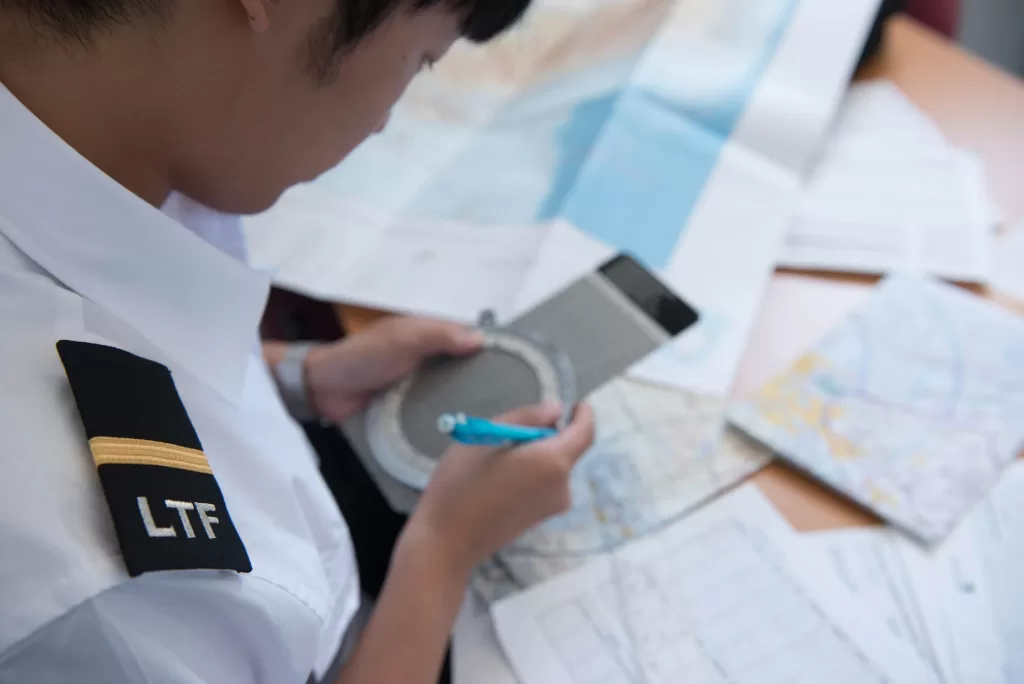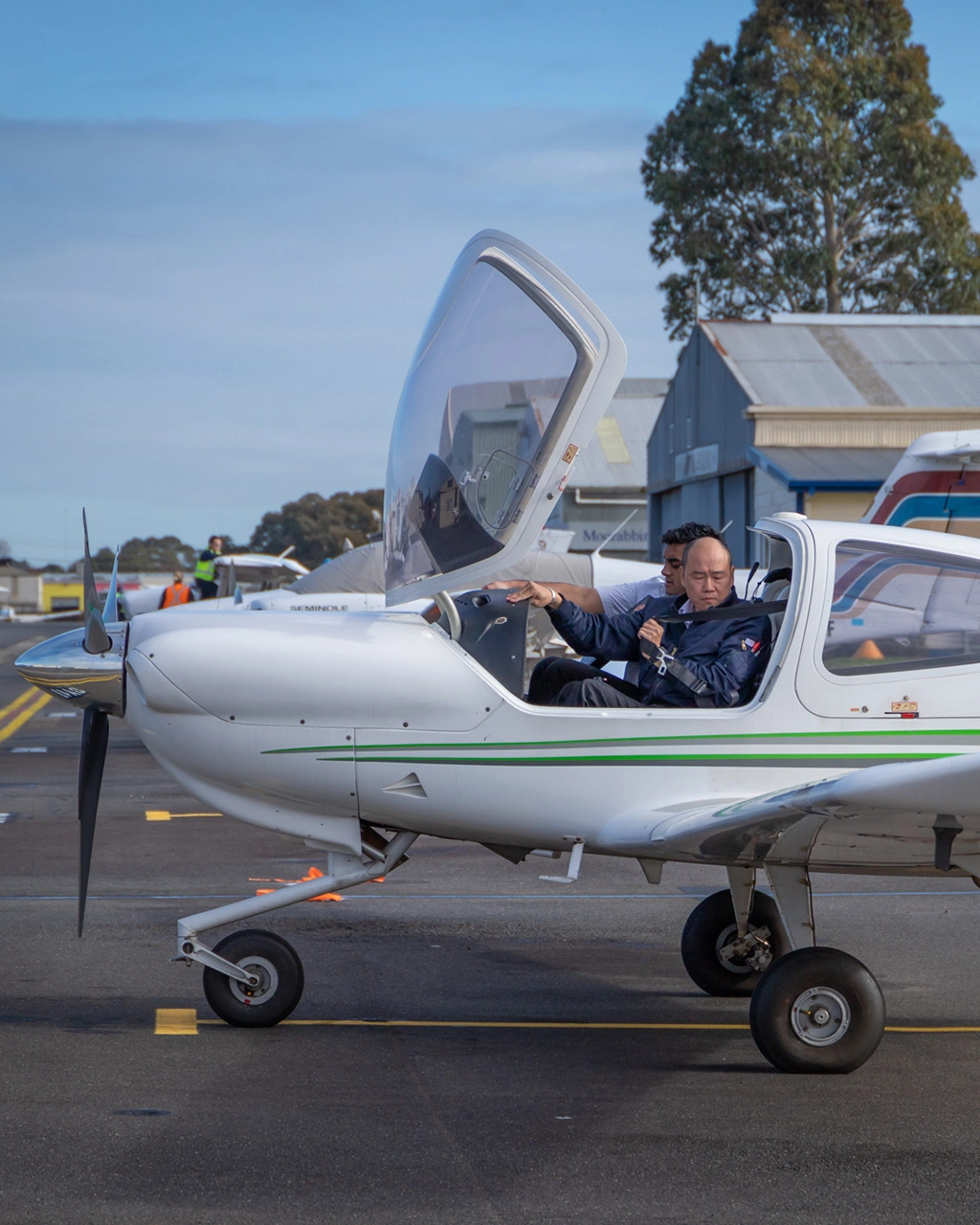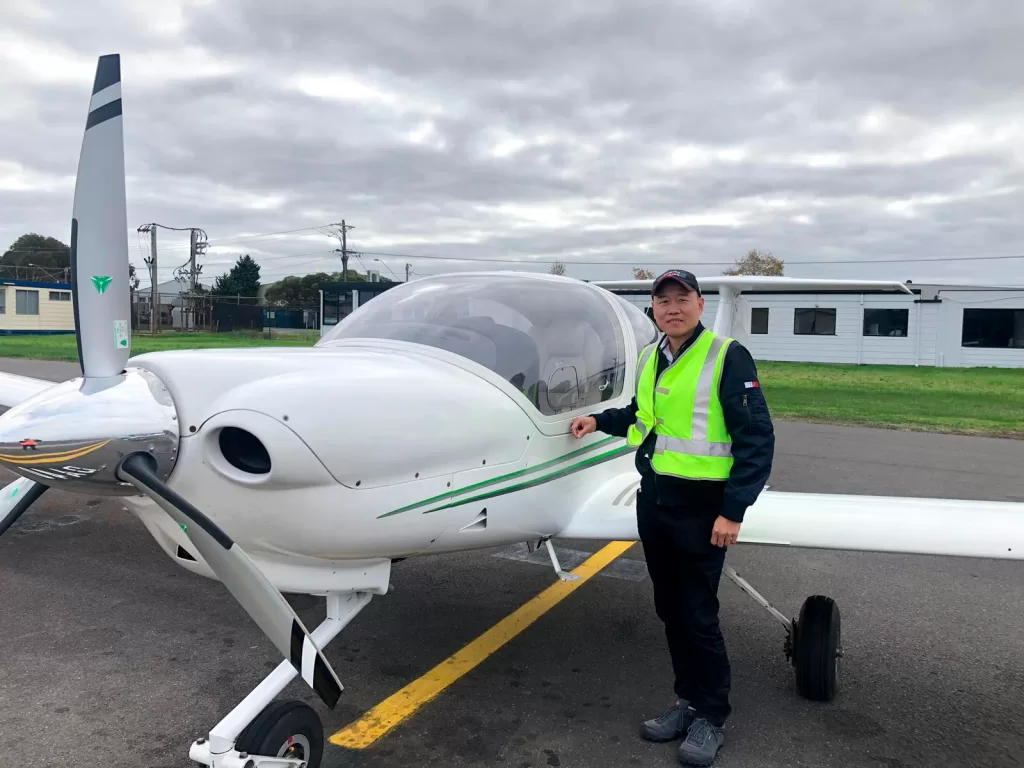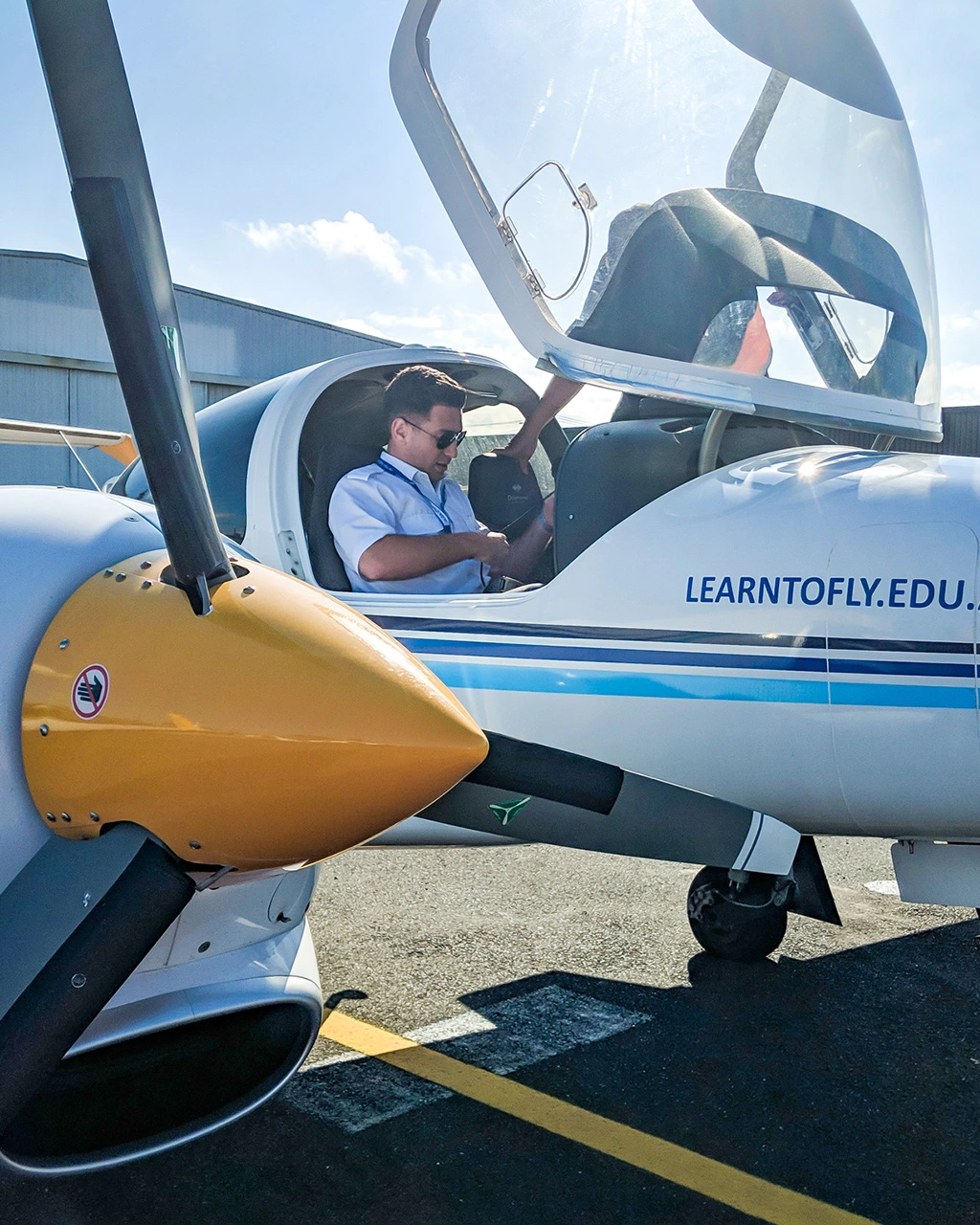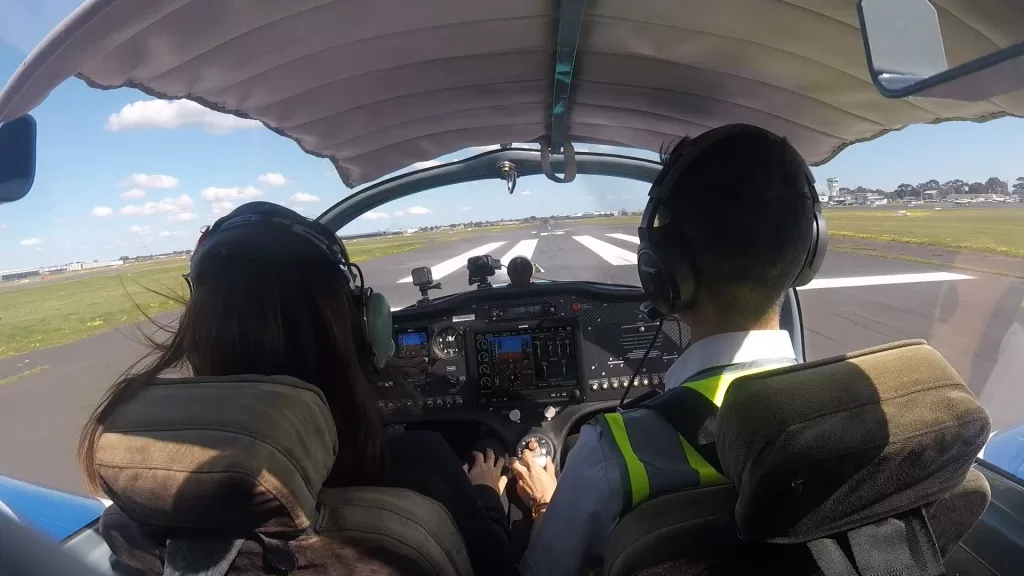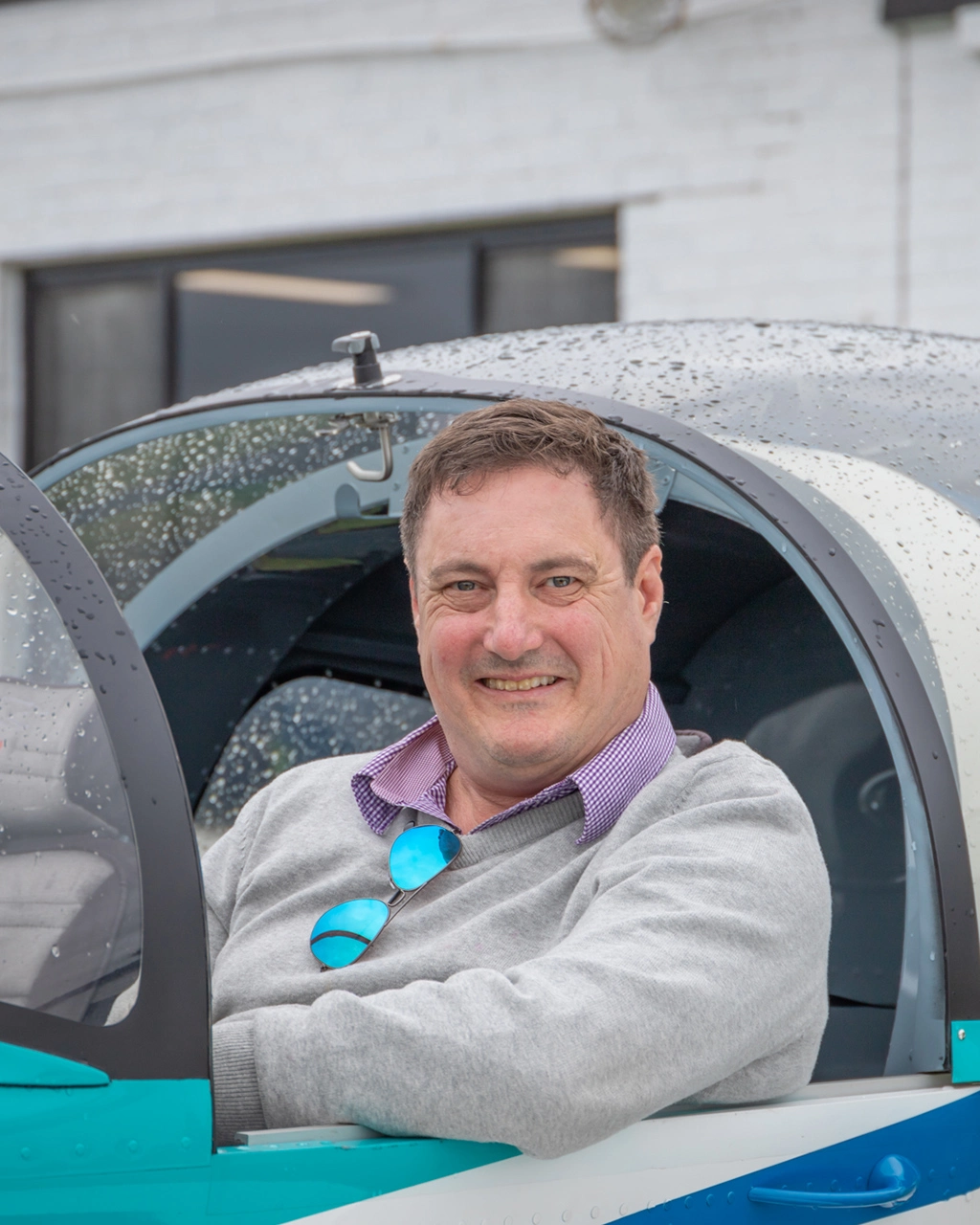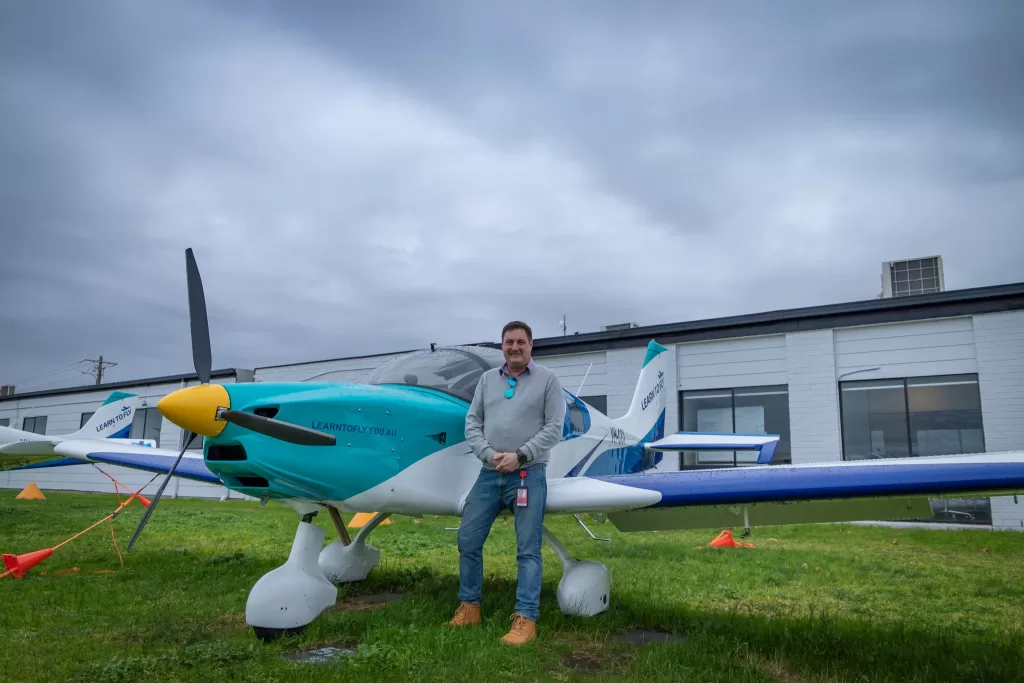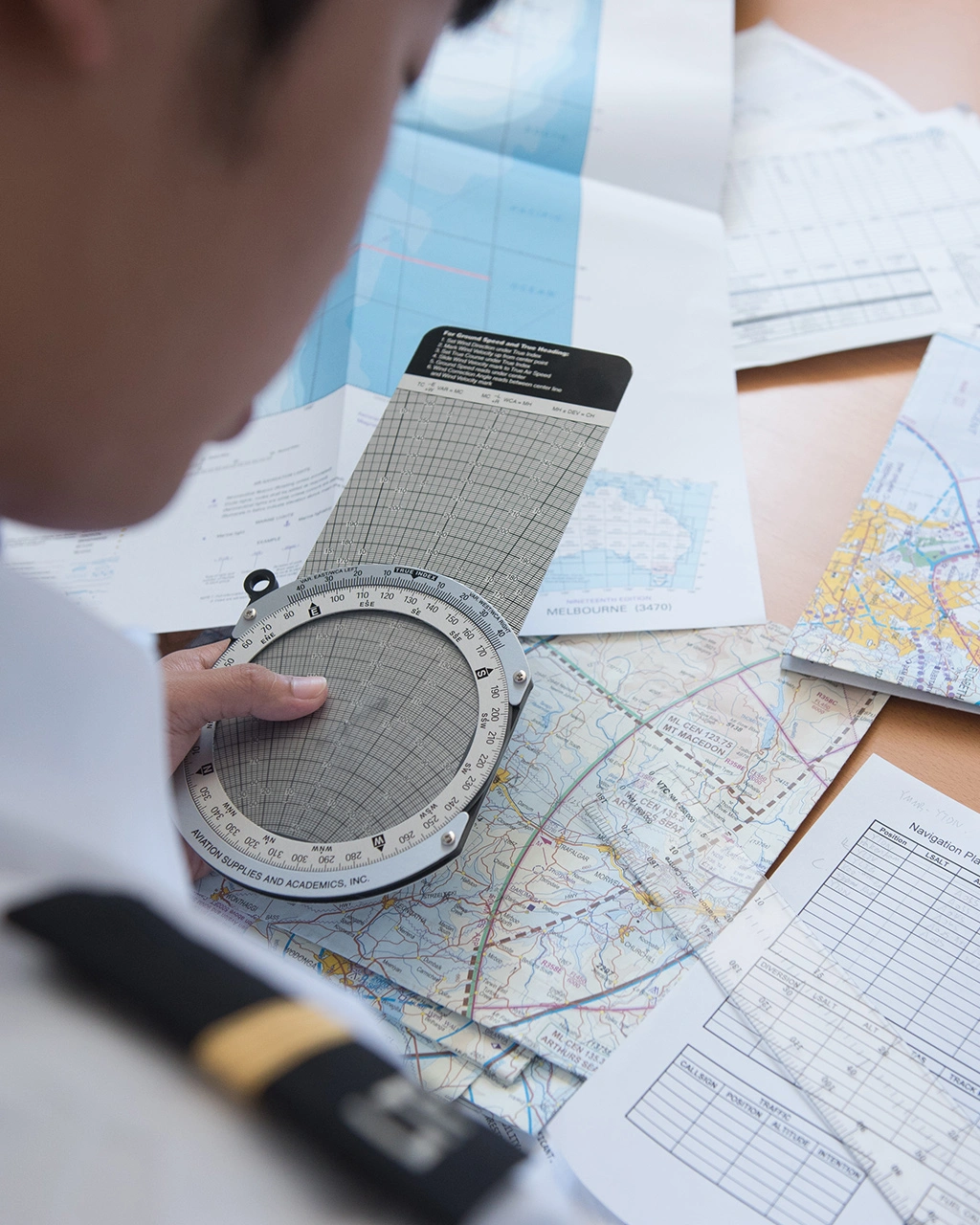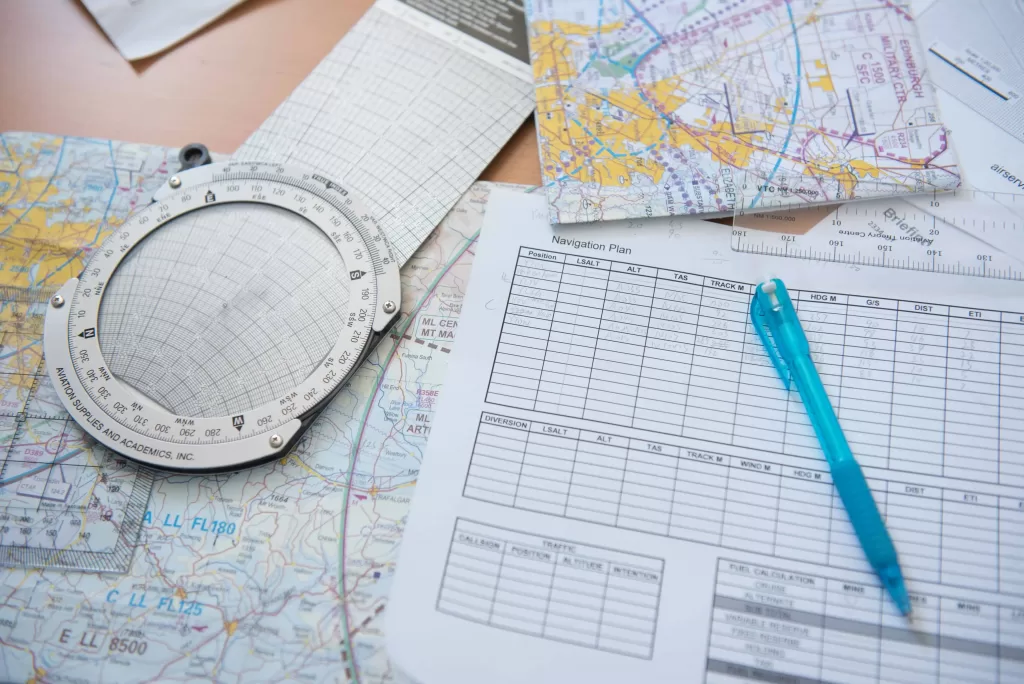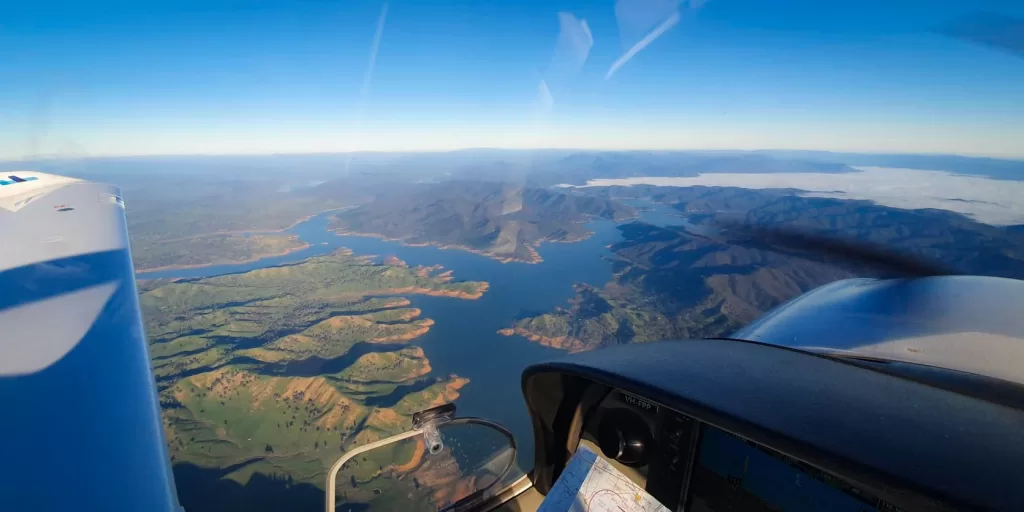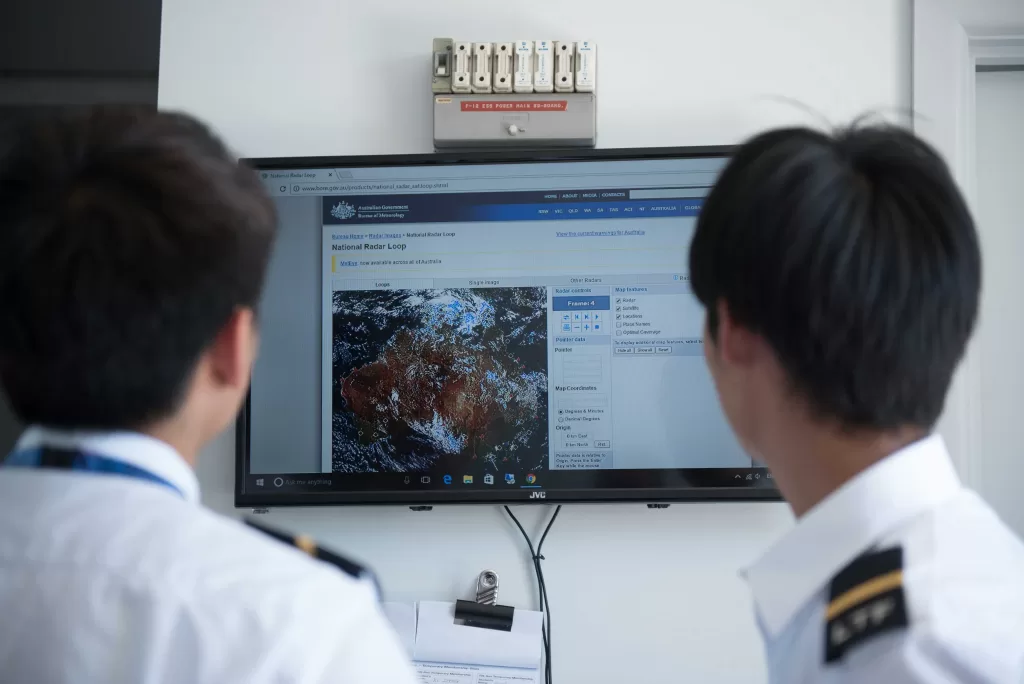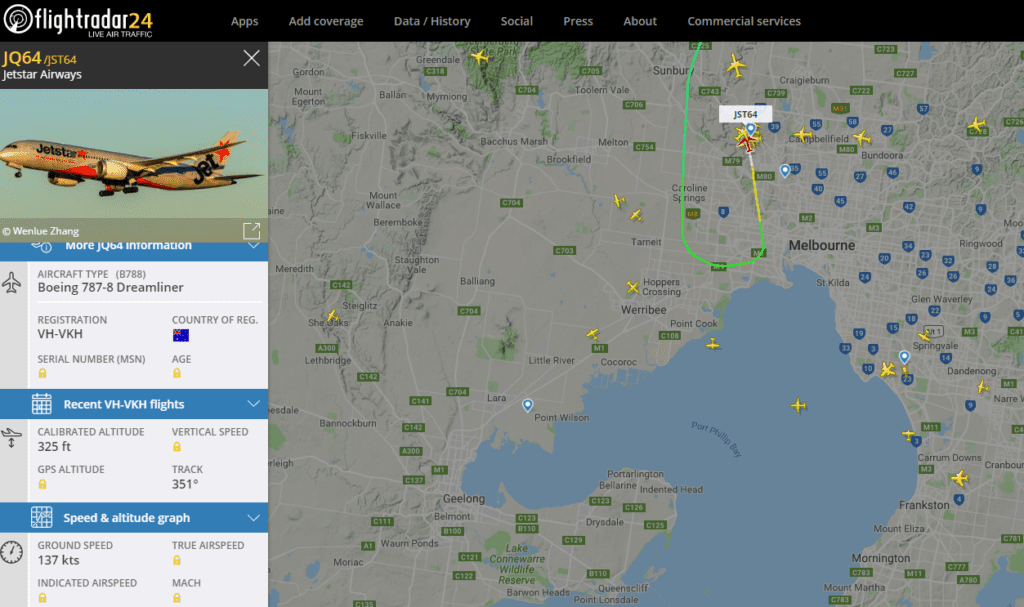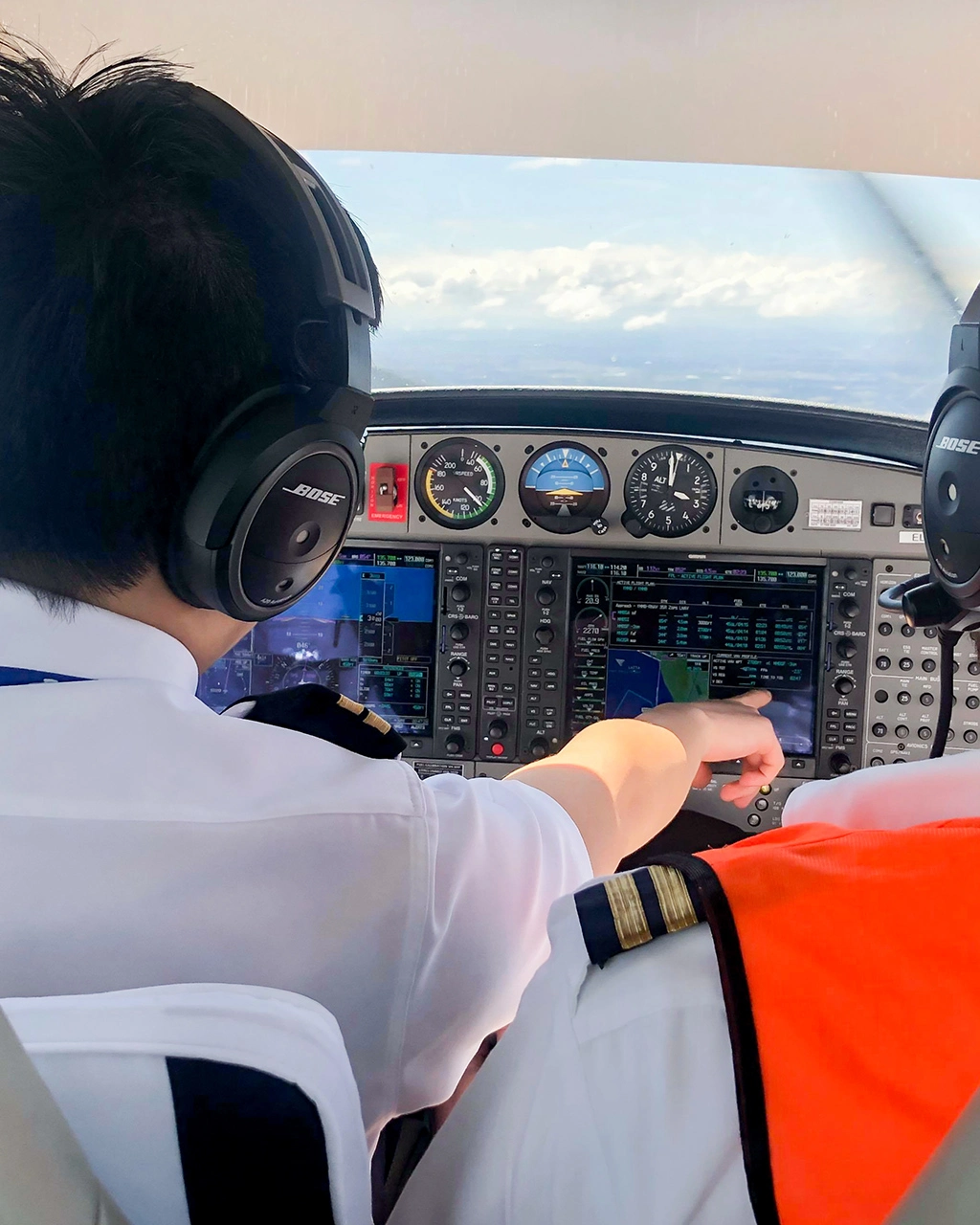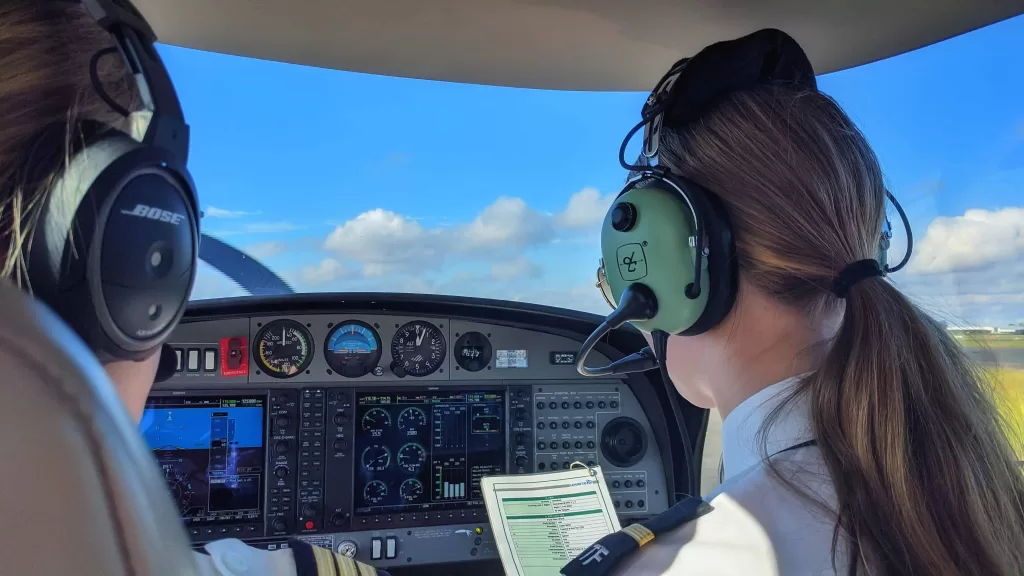Challenges aren’t stopping David from fulfilling his pilot dream. At 71 years young, he’s studying a Recreational Pilot Licence at Learn To Fly Melbourne.
David, you’re studying a Recreational Pilot Licence with us right?
Well, yes that is the first step (laughs).
Have you already thought about what you are going to do next?
Of course! I haven’t got time to waste now.
David is 71 and signed up for studying a Recreational Pilot Licence this year. We find out he’s not only a friendly chap who has made an impression on many of the instructors and staff at LTF, but he is also a pretty tough character.
He shares with us how his flight training path has hit some patches of turbulence, and how he has overcome adversity to chase his dreams. There is no stopping David now.
Let’s go back to the beginning. Tell us how you got into aviation and what made you want to get your pilot licence?
I guess it’s like many young teenagers in my day, I was into model planes. I desired to build them and I used to just fly them around in circles. We didn’t have radio control, we just had a couple of wires flying a small model plane. I went onto further studies and other life paths, and I left that aviation interest behind a little bit.
Then one of my uncles was a pilot, he was a radio operator in World War II. He maintained his interest in aviation and gave me the chance to go up with him, flying around northern NSW, back country area
So how old were you at this point?
In my late teens. I loved it. We flew around in a Tigermoth over that area. Such good fun.
Did he let you take the controls?
No, and I don’t think I asked (laughs). I was happy to sit in the front and look at the scenery and checking out the area below – waterholes, cattle, sheep and things like that. I just knew I enjoyed being up there.
A lot of other things happened in my life. Completing school, getting a job, got married, had kids. Becoming a pilot took a back seat. But it was always there in my mind “gee I’d love to learn to fly”. I didn’t have the time and I was making sure my kids got a good education and took care of their needs first.
I used to have a farm but I sold that, so have some money in the bank. What am I going to do? (laughs) Get my pilot licence! Do what I always wanted to do. Now I can afford to get my licence and maybe buy a plane. So it’s a comfortable place to be in.
But the journey getting here has been a bit traumatic for me.
We have a bit of background on that. Are you happy to talk about that with us?
Oh yes, it helps me. My wife when she was alive I encouraged her to fly a helicopter. I bought her a flight as a 50th birthday present. I thought by having the first lesson in a helicopter I hoped she would really like it and continue or maybe want to fly planes too. But it was enough for her just to experience the flight. Unfortunately she passed away from an aneurysm.
As it turns out that is somewhat how I found out I too had an aneurysm. I didn’t have any symptoms though. When I went for my medical I told my doctor had a bad cycling accident and split my head open, broke my leg.
How long ago was that?
30 odd years ago. A long time! But it was a big accident so the doctor said maybe you should check that out. So I went to a radiologist and had a CT scan. The radiologist calls me in and says you should go and see your doctor straight away because you have got a small aneurysm. So I had an operation. A neurosurgeon put a clip on it.
Fortunately, afterwards, the doctor said, ‘You are still good to get your pilot licence’! And that was 3 or 4 months ago.
Wow, so very recent then.
Yes, I’d already started my flying training and I didn’t want to give up. Because I had to get the Grade 1 Medical, it was through those discussions with the doctor about my history, and the bike accident, that she suggested getting checked out more thoroughly.
So how has that been a bit of motivation for getting out there and studying Recreational Pilot Licence?
Yes in some respects. It’s given me something to focus on this and it’s something to work towards achieving. It gets the adrenaline running (laughs) and I am enjoying it. I’m looking forward to when I can take the grandkids! Something exciting to show them. They are a bit young still though. One he is only eight months old and the older one she is four-and-a-half.
How have you found the course so far?
I’ve found the course well-paced and I don’t feel like I’m being pushed. Hopefully, I am reasonably competent in what I am doing. I’m taking it very slowly and carefully. The instruction of the course is well laid out, the stages of it and how it all fits in so I’m enjoying that part.
My instructor is Cam Mitchell and I’ve flown once with Dave Ostler who are both very good. It feels like a bit of a family now. Everyone is supportive and Dips (School Operations Manager) is fantastic. I was checking out the different schools and I found your website and it looked good, so I came in and Dips was so friendly and explained everything well. It was the friendly open approach that attracted me. I’ve felt comfortable coming here.
Have you flown any others?
Not personally. Not yet. But my cousin used to fly in a Cessna 172 ages ago, like forty-odd years ago. A few years ago I went out to Lilydale and thought I might see about doing lessons there and went up in a Victa Air Tourer.
What is the aircraft you are learning in?
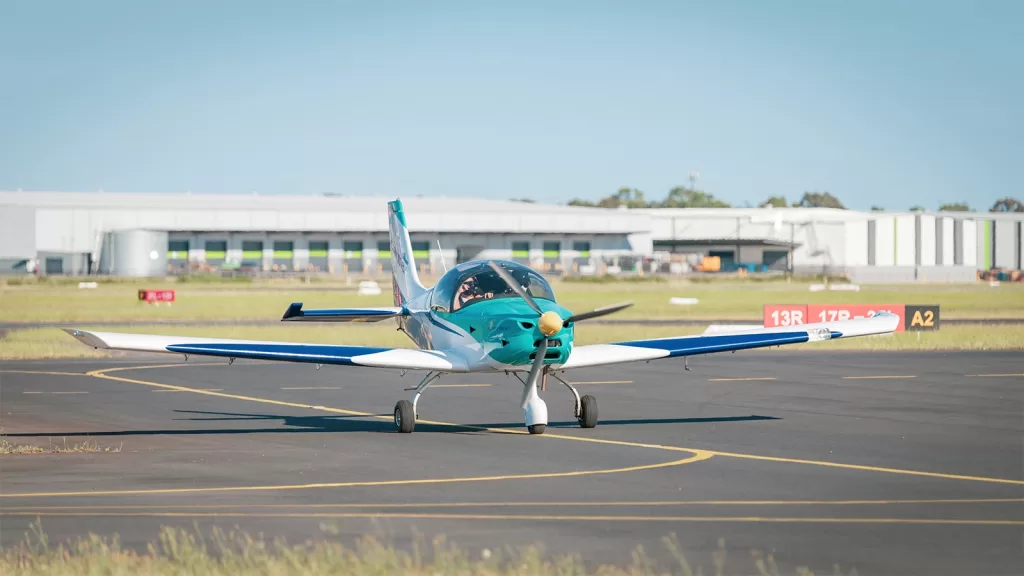
What do you enjoy most about flying?
I like the part where I am pushing myself differently because even though I am a trained teacher and with that, in the past, I did lesson planning, I am still very much a person who just chucks the stuff in and goes. Whereas flying an aeroplane is very different to that so I’m enjoying spending time on the planning and making sure that I do all the checks prior, and weather forecasting and flight planning. I like the discipline that’s involved in controlling an aircraft.
If you were going to buy a plane, have you thought about what kind you would buy?
It would probably be a Foxbat or a Jabiru or one of those types. The reason would be I want a high-wing one where I can see out more easily and if you go camping you can camp under the wing. There are lots of high wing aircraft becoming available. A light plane, high wing, able to carry a small amount of luggage like your tent and picnic essentials.
Do you like tinkering around with the engines as well?
In the past I was mechanically oriented but as I’ve gotten more mature, not so much. Modern engines aren’t so much fun to play around with, computer controls, fuel injection and all that. It’s too specialised. But you know give me a diesel tractor I’ll happily pull that apart to get it working again. I’m not interested in tinkering with aircraft engines though.
You’re having enough fun just flying them?
Yeah, I’m loving flying and the idea of visiting places, as I said, camping under the wing and doing all those things.
Sounds like a perfect way to spend your time.
Australia is a big country and driving takes ages so I think, why not fly yourself in a plane. You can see where you are going if there is bad weather ahead you can just find somewhere to land and try again later.
I’m not a maverick but you know, if there is a dry gravel road down there, check there are no powerlines, no trees, I can just put it down there (laughs).
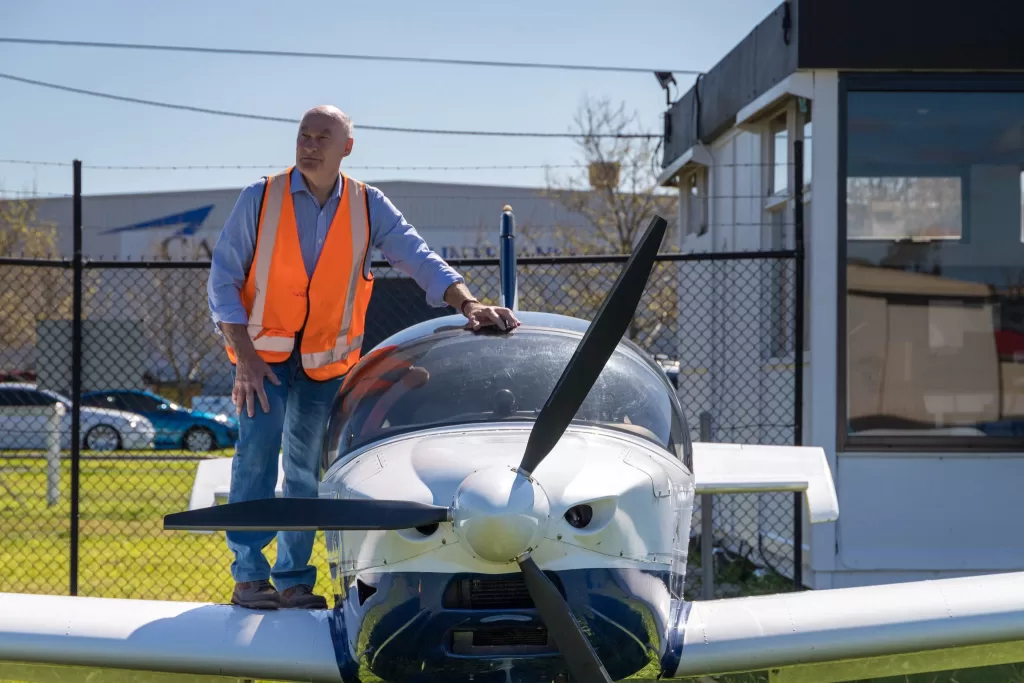
Want to get your Recreational Pilot Licence? Email hello@learntofly.com.au or visit https://drift.me/learntofly/meeting to book a meeting and school tour.









